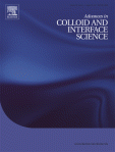 Dallas, P; Sharma, VK; Zboril, R: “Silver polymeric nanocomposites as advanced antimicrobial agents: Classification, synthetic paths, applications, and perspectives”, Adv. Colloid Interface Sci. (2011) 166, 119-135,
DOI: 10.1016/j.cis.2011.05.008, IF=8.636.
Dallas, P; Sharma, VK; Zboril, R: “Silver polymeric nanocomposites as advanced antimicrobial agents: Classification, synthetic paths, applications, and perspectives”, Adv. Colloid Interface Sci. (2011) 166, 119-135,
DOI: 10.1016/j.cis.2011.05.008, IF=8.636.
Abstract - Utilization of metallic nanoparticles in various biotechnological and medical applications represents one of the most extensively investigated areas of the current materials science. These advanced applications require the appropriate chemical functionalization of the nanoparticles with organic molecules or their incorporation in suitable polymer matrices. The intensified interest in polymer nanocomposites with silver nanoparticles is due to the high antimicrobial effect of nanosilver as well as the unique characteristics of polymers which include their excellent structural uniformity, multivalency, high degree of branching, miscellaneous morphologies and architectures, and highly variable chemical composition. In this review, we explore several aspects of antimicrobial polymer silver nanocomposites, giving special focus to the critical analysis of the reported synthetic routes including their advantages, drawbacks, possible improvements, and real applicability in antibacterial and antifungal therapy. A special attention is given to "green" synthetic routes exploiting the biopolymeric matrix and to the methods allowing preparing magnetically controllable antimicrobial polymers for targeting to an active place. The controversial mechanism of the action of silver against bacteria, fungi and yeasts as well as perspectives and new applications of silver polymeric nanocomposites is also briefly discussed.
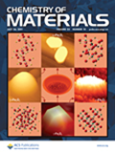 Machala, L; Tucek, J; Zboril, R: “Polymorphous Transformations of Nanometric Iron(III) Oxide: A Review”, Chem. Mat. (2011) 23, 3255-3272,
DOI: 10.1021/cm200397g, IF=8.535.
Machala, L; Tucek, J; Zboril, R: “Polymorphous Transformations of Nanometric Iron(III) Oxide: A Review”, Chem. Mat. (2011) 23, 3255-3272,
DOI: 10.1021/cm200397g, IF=8.535.
Abstract - There is great interest in iron oxides, especially in nanosized form, for both fundamental and practical reasons. Because of its polymorphism, iron(III) oxide (ferric oxide, Fe2O3) is one of the most interesting and potentially useful phases of the iron oxides. Each of the four different known crystalline Fe2O3 polymorphs (alpha-, beta-, gamma-, and epsilon-Fe2O3) has unique biochemical, magnetic, catalytic, and other properties that make it suitable for specific technical and biomedical applications. High temperature treatment is a key step in most syntheses of iron(III) oxides but often triggers polymorphous transformations that result in the formation of undesired mixtures of Fe2O3 polymorphs. It is therefore important to control the parameters that induce polymorphous transformations when seeking to prepare a given Fe2O3 polymorph as a single phase; identifying and understanding these parameters is a major challenge in the study of the polymorphism of solid compounds. This review discusses the dependence of the mechanism and kinetics of the polymorphous transformations of Fe2O3 on the intrinsic properties of the material (polymorph structure, particle size, particle morphology, surface coating, particle aggregation, incorporation of particles within a matrix) and external parameters of synthetic and/or natural conditions such as temperature, atmosphere, and pressure. The high-temperature and high-pressure induced transformations of Fe2O3 are reviewed in detail. In addition, the question of whether different Fe2O3 polymorphs are formed sequentially or simultaneously during thermal processes is discussed extensively, with reference to the experimental results that have been invoked to support these two different mechanisms. The use of selected analytical tools in studying the polymorphous transformations of Fe2O3 is also discussed, with particular emphasis on in situ approaches. Finally, key objectives for future research in this area are highlighted: (i) the development of more sophisticated kinetic control of the γ-Fe2O3 → ε-Fe2O3 phase transformation; (ii) investigation of particle morphology changes during the polymorphous transformations of Fe2O3; and (iii) the study of high-pressure induced phase transformations of Fe2O3 polymorphs other than α-Fe2O3.
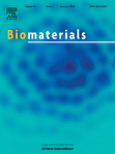
Prucek, R; Tucek, J; Kilianova, M; Panacek, A; Kvitek, L; Filip, J; Kolar, M; Tomankova, K; Zboril, R: “The targeted antibacterial and antifungal properties of magnetic nanocomposite of iron oxide and silver nanoparticles”, Biomaterials (2011) 32, 4704-4713,
DOI: 10.1016/j.biomaterials.2011.03.039, IF=8.312.
Abstract - Two types of magnetic binary nanocomposites, Ag@Fe
3O
4 and γ-Fe
2O
3@Ag, were synthesized and characterized and their antibacterial activities were tested. As a magnetic component, Fe
3O
4 (magnetite) nanoparticles with an average size of about 70 nm and monodisperse γ-Fe
2O
3 (maghemite) nanoparticles with an average size of 5 nm were used. Nanocomposites were prepared via in situ chemical reduction of silver ions by maltose in the presence of particular magnetic phase and molecules of polyacrylate serving as a spacer among iron oxide and silver nanoparticles. In the case of the Ag@Fe
3O
4 nanocomposite, silver nanoparticles, caught at the surfaces of Fe
3O
4 nanocrystals, were around 5 nm in a size. On the contrary, in the case of the γ-Fe
2O
3@Ag nanocomposite, ultrafine γ-Fe2O3 nanoparticles surrounded silver nanoparticles ranging in a size between 20 and 40 nm. In addition, the molecules of polyacrylate in this nanocomposite type suppress considerably interparticle magnetic interactions as proved by magnetization measurements. Both synthesized nanocomposites exhibited very significant antibacterial and antifungal activities against ten tested bacterial strains (minimum inhibition concentrations (MIC) from 15.6 mg/L to 125 mg/L) and four candida species (MIC from 1.9 mg/L to 31.3 mg/L). Moreover, acute nanocomposite cytotoxicity against mice embryonal fibroblasts was observed at concentrations of higher than 430 mg/L (Ag@Fe
3O
4) and 292 mg/L (γ-Fe
2O
3@Ag). With respect to the non-cytotoxic nature of the polyacrylate linker, both kinds of silver nanocomposites are well applicable for a targeted magnetic delivery of silver nanoparticles in medicinal and disinfection applications.

Lemr, K; Cernoch, A; Soubusta, J; Kieling, K; Eisert, J; Dusek, M: “Experimental Implementation of the Optimal Linear-Optical Controlled Phase Gate”, Phys. Rev. Lett. (2011) 106, 013602,
DOI: 10.1103/PhysRevLett.106.013602, IF=7.728.
Abstract - We report on the first experimental realization of optimal linear-optical controlled phase gates for arbitrary phases. The realized scheme is entirely flexible in that the phase shift can be tuned to any given value. All such controlled phase gates are optimal in the sense that they operate at the maximum possible success probabilities that are achievable within the framework of postselected linear-optical implementations with vacuum ancillas. The quantum gate is implemented by using bulk optical elements and polarization encoding of qubit states. We have experimentally explored the remarkable observation that the optimum success probability is not monotone in the phase.

RCPTM members (Hamal, P.; Nozka, L.) have contributed to a number of ATLAS Collaboration articles that form a significant part among the most valued publications of the Centre. Total 7 Phys. Rev. Lett. (IF=7.728) and 15 Phys. Lett. B (IF=6.019) papers have been published from the areas of the search for the Higgs boson, the search for supersymmetric particles, and the search of other signatures of new physics: extra dimensions/missing energy, micro black holes production etc.
 Pierre Auger Collaboration (Horváth P.; Hrabovský M.): “The effect of the geomagnetic field on cosmic ray energy estimates and large scale anisotropy searches on data from the Pierre Auger Observatory”, J. Cosmol. Astropart. Phys. (2011) 22,
DOI:10.1088/1475-7516/2011/11/022, IF=5.877.
Pierre Auger Collaboration (Horváth P.; Hrabovský M.): “The effect of the geomagnetic field on cosmic ray energy estimates and large scale anisotropy searches on data from the Pierre Auger Observatory”, J. Cosmol. Astropart. Phys. (2011) 22,
DOI:10.1088/1475-7516/2011/11/022, IF=5.877.
Pierre Auger Collaboration (Horváth P.; Hrabovský M.): “Anisotropy and chemical composition of ultra-high energy cosmic rays using arrival directions measured by the Pierre Auger Observatory”, J. Cosmol. Astropart. Phys. (2011) 22,
DOI: 10.1088/1475-7516/2011/06/022, IF=5.877.
We present a comprehensive study of the influence of the geomagnetic field on the energy estimation of extensive air showers with a zenith angle smaller than 60 degrees, detected at the Pierre Auger Observatory. the geomagnetic field induces an azimuthal modulation of the estimated energy of cosmic rays up to the similar to 2% level at large zenith angles. We present a method to account for this modulation of the reconstructed energy. We analyse the effect of the modulation on large scale anisot
The Pierre Auger Collaboration has reported. evidence for anisotropy in the distribution of arrival directions of the cosmic rays with energies E > E(th) = 5.5 x 10(19) eV. These show a correlation with the distribution of nearby extragalactic objects, including an apparent excess around the direction of Centaurus A. If the particles responsible for these excesses at E > E(th) are heavy nuclei with charge Z, the proton component of the sources should lead to excesses in the same regions at energies E/Z. We here report the lack of anisotropies in these directions at energies above E(th)/Z (for illustrative values of Z = 6, 13, 26). If the anisotropies above E(th) are due to nuclei with charge Z, and under reasonable assumptions about the acceleration process, these observations imply stringent constraints on the allowed proton fraction at the lower energies.
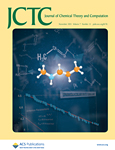 Rezac, J; Riley, KE; Hobza, P: “Extensions of the S66 Data Set: More Accurate Interaction Energies and Angular-Displaced Nonequilibrium Geometries”, J. Chem. Theory Comput. (2011) 7, 3466-3470,
DOI: 10.1021/ct200523a, IF=5.310.
Rezac, J; Riley, KE; Hobza, P: “Extensions of the S66 Data Set: More Accurate Interaction Energies and Angular-Displaced Nonequilibrium Geometries”, J. Chem. Theory Comput. (2011) 7, 3466-3470,
DOI: 10.1021/ct200523a, IF=5.310.
Abstract - We present two extensions of the recently published S66 data set [Řezáč, Riley, Hobza; DOI: 10.1021/ct2002946]. Interaction energies for the equilibrium geometry complexes have been recalculated using a triple-ζ basis set for the CCSD(T) term in the CCSD(T)/CBS scheme. This allows for the extrapolation of this term to the complete basis set limit, improving accuracy by almost 1 order of magnitude compared to the scheme previously used for the S66 set. Now, we estimate the largest error in the set to be about 1%. Validation of several methods against the new data indicates the exceptional robustness and accuracy of the SCS-MI-CCSD method. The second extension improves the coverage of nonequilibrium geometries. We introduce a new data set, S66a8, that samples intermolecular angular degrees of freedom in the S66 complexes. For each of the 66 complexes, eight displaced geometries have been constructed, systematically sampling possible rotations of the monomers. Interaction energies in this set are calculated at the CCSD(T)/CBS level consistently with the earlier introduced S66x8 data set that samples the intermolecular distance.
 Granatier, J; Lazar, P; Otyepka, M; Hobza, P: “The Nature of the Binding of Au, Ag, and Pd to Benzene, Coronene, and Graphene: From Benchmark CCSD(T) Calculations to Plane-Wave DFT Calculations” J. Chem. Theory Comput. (2011) 7, 3743-3755,
DOI: 10.1021/ct200625h, IF=5.310.
Granatier, J; Lazar, P; Otyepka, M; Hobza, P: “The Nature of the Binding of Au, Ag, and Pd to Benzene, Coronene, and Graphene: From Benchmark CCSD(T) Calculations to Plane-Wave DFT Calculations” J. Chem. Theory Comput. (2011) 7, 3743-3755,
DOI: 10.1021/ct200625h, IF=5.310.
Abstract - The adsorption of Ag, Au, and Pd atoms on benzene, coronene, and graphene has been studied using post Hartree–Fock wave function theory (CCSD(T), MP2) and density functional theory (M06-2X, DFT-D3, PBE, vdW-DF) methods. The CCSD(T) benchmark binding energies for benzene–M (M = Pd, Au, Ag) complexes are 19.7, 4.2, and 2.3 kcal/mol, respectively. We found that the nature of binding of the three metals is different: While silver binds predominantly through dispersion interactions, the binding of palladium has a covalent character, and the binding of gold involves a subtle combination of charge transfer and dispersion interactions as well as relativistic effects. We demonstrate that the CCSD(T) benchmark binding energies for benzene–M complexes can be reproduced in plane-wave density functional theory calculations by including a fraction of the exact exchange and a nonempirical van der Waals correction (EE+vdW). Applying the EE+vdW method, we obtained binding energies for the graphene–M (M = Pd, Au, Ag) complexes of 17.4, 5.6, and 4.3 kcal/mol, respectively. The trends in binding energies found for the benzene–M complexes correspond to those in coronene and graphene complexes. DFT methods that use empirical corrections to account for the effects of vdW interactions significantly overestimate binding energies in some of the studied systems.
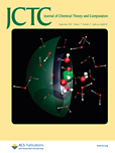
Karlicky, F; Otyepka, M: “First Step in the Reaction of Zerovalent Iron with Water”, J. Chem. Theory Comput. (2011) 7, 2876-2885,
DOI: 10.1021/ct200372y, IF=5.310.
Abstract - Here we present a comprehensive quantum chemical study of the simplest model system for the reactions of nanoscale zerovalent iron, i.e., the gas-phase reaction of an iron atom with water, to identify a theoretical method that provides reasonably accurate geometries and thermochemical data for selected iron compounds along the reaction path (Fe, FeO, HFeOH, Fe(OH)2). The energies of selected stationary points on the ground electronic potential energy surface were systematically studied using HF and post-HF methods (MP2, MP3, MP4, CCSD, CCSD(T), CASSCF, MRCI) and selected DFT functionals (B3LYP, B97-1, BPW91, M06, M06-HF, M06-L, M06-2X and MPW1K) using various basis sets up to the complete basis set. Scalar relativistic effects were modeled using the Douglas–Kroll–Hess Hamiltonian up to the fourth order, and the effects of valence plus outer-core electronic correlation were also evaluated. The calculations showed that (i) dynamic electron correlation is crucial for accurate modeling of the reactions in question, (ii) the PES around the stationary points along the reaction path is rather flat, (iii) the single-point energies calculated at the CCSD(T)/CBS level are in reasonably good agreement with experimental measurements, (iv) it is difficult to interpret DFT energies in the absence of benchmarking against experimental data or results obtained at a level of theory that is known to accurately reproduce experimental results, (v) relativistic effects are relatively modest in this system but should be included if chemical accuracy is desired, and (vi) careful analysis of the multireference character of the system and potential spin contamination is important. The CCSD(T)-3s3p-DKH2/CBS method can be considered the gold standard for this reaction because calculations at this level are in good agreement with experimental atomic excitation energies and thermochemical data. The gas-phase activation energy of the reaction between Fe and H2O is 23.6 kcal/mol including the ZPVE correction (ΔG‡298K = 29.2 kcal/mol), and HFeOH is a stable intermediate lying −31.2 kcal/mol below the reactants (ΔG298K = −25.4 kcal/mol).

Zgarbova, M; Otyepka, M; Sponer, J; Mladek, A; Banas, P; Cheatham, TE; Jurecka, P: “Refinement of the Cornell et al. Nucleic Acids Force Field Based on Reference Quantum Chemical Calculations of Glycosidic Torsion Profiles”, J. Chem. Theory Comput. (2011) 7, 2886-2902,
DOI: 10.1021/ct200162x, IF=5.310.
Abstract - We report a reparameterization of the glycosidic torsion χ of the Cornell et al. AMBER force field for RNA, χOL. The parameters remove destabilization of the anti region found in the ff99 force field and thus prevent formation of spurious ladder-like structural distortions in RNA simulations. They also improve the description of the syn region and the syn–anti balance as well as enhance MD simulations of various RNA structures. Although χOL can be combined with both ff99 and ff99bsc0, we recommend the latter. We do not recommend using χOL for B-DNA because it does not improve upon ff99bsc0 for canonical structures. However, it might be useful in simulations of DNA molecules containing syn nucleotides. Our parametrization is based on high-level QM calculations and differs from conventional parametrization approaches in that it incorporates some previously neglected solvation-related effects (which appear to be essential for obtaining correct anti/high-anti balance). Our χOL force field is compared with several previous glycosidic torsion parametrizations.
 Dallas, P; Sharma, VK; Zboril, R: “Silver polymeric nanocomposites as advanced antimicrobial agents: Classification, synthetic paths, applications, and perspectives”, Adv. Colloid Interface Sci. (2011) 166, 119-135,
DOI: 10.1016/j.cis.2011.05.008, IF=8.636.
Dallas, P; Sharma, VK; Zboril, R: “Silver polymeric nanocomposites as advanced antimicrobial agents: Classification, synthetic paths, applications, and perspectives”, Adv. Colloid Interface Sci. (2011) 166, 119-135,
DOI: 10.1016/j.cis.2011.05.008, IF=8.636. Machala, L; Tucek, J; Zboril, R: “Polymorphous Transformations of Nanometric Iron(III) Oxide: A Review”, Chem. Mat. (2011) 23, 3255-3272,
DOI: 10.1021/cm200397g, IF=8.535.
Machala, L; Tucek, J; Zboril, R: “Polymorphous Transformations of Nanometric Iron(III) Oxide: A Review”, Chem. Mat. (2011) 23, 3255-3272,
DOI: 10.1021/cm200397g, IF=8.535.

 Pierre Auger Collaboration (Horváth P.; Hrabovský M.): “The effect of the geomagnetic field on cosmic ray energy estimates and large scale anisotropy searches on data from the Pierre Auger Observatory”, J. Cosmol. Astropart. Phys. (2011) 22,
DOI:10.1088/1475-7516/2011/11/022, IF=5.877.
Pierre Auger Collaboration (Horváth P.; Hrabovský M.): “The effect of the geomagnetic field on cosmic ray energy estimates and large scale anisotropy searches on data from the Pierre Auger Observatory”, J. Cosmol. Astropart. Phys. (2011) 22,
DOI:10.1088/1475-7516/2011/11/022, IF=5.877. Rezac, J; Riley, KE; Hobza, P: “Extensions of the S66 Data Set: More Accurate Interaction Energies and Angular-Displaced Nonequilibrium Geometries”, J. Chem. Theory Comput. (2011) 7, 3466-3470,
DOI: 10.1021/ct200523a, IF=5.310.
Rezac, J; Riley, KE; Hobza, P: “Extensions of the S66 Data Set: More Accurate Interaction Energies and Angular-Displaced Nonequilibrium Geometries”, J. Chem. Theory Comput. (2011) 7, 3466-3470,
DOI: 10.1021/ct200523a, IF=5.310. Granatier, J; Lazar, P; Otyepka, M; Hobza, P: “The Nature of the Binding of Au, Ag, and Pd to Benzene, Coronene, and Graphene: From Benchmark CCSD(T) Calculations to Plane-Wave DFT Calculations” J. Chem. Theory Comput. (2011) 7, 3743-3755,
DOI: 10.1021/ct200625h, IF=5.310.
Granatier, J; Lazar, P; Otyepka, M; Hobza, P: “The Nature of the Binding of Au, Ag, and Pd to Benzene, Coronene, and Graphene: From Benchmark CCSD(T) Calculations to Plane-Wave DFT Calculations” J. Chem. Theory Comput. (2011) 7, 3743-3755,
DOI: 10.1021/ct200625h, IF=5.310.



